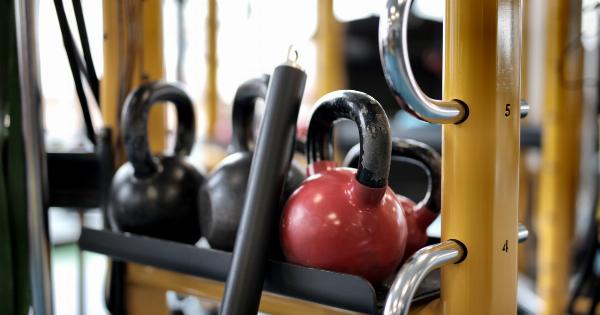Counting your heart rate is an essential skill that can provide valuable information about your health and fitness level.
Whether you are an athlete, fitness enthusiast, or simply curious about your cardiovascular health, knowing how to measure your heart rate accurately is crucial. In this article, we will guide you through the process of counting your heart rate like a pro.
Understanding Heart Rate
Before we delve into the details of measuring heart rate, let’s first understand what it is. Heart rate refers to the number of times your heart beats per minute (bpm).
It serves as an indicator of your cardiovascular system’s functioning and can provide insights into your overall health and level of physical fitness.
The Importance of Monitoring Heart Rate
Monitoring your heart rate is important for several reasons. Firstly, it can help you gauge the intensity of your workouts.
By monitoring your heart rate during exercise, you can ensure that you are training within your target heart rate zone, which is crucial for optimizing the benefits of your workouts.
Secondly, tracking your heart rate can help you identify any irregularities or abnormalities in your cardiovascular system. Sudden spikes or drops in heart rate may indicate underlying health conditions that require medical attention.
Lastly, monitoring your heart rate can provide insight into your recovery and overall cardiovascular health. Changes in resting heart rate over time can be an early indication of overtraining, fatigue, or even illness.
Methods for Measuring Heart Rate
There are several methods you can use to measure your heart rate accurately. Let’s explore some of them:.
1. Using Your Fingers
This is one of the simplest and most accessible methods for measuring your heart rate. To use this method, follow these steps:.
– Find your pulse by placing the tips of your index and middle fingers on the inside of your wrist, just below the base of your thumb.
– Apply gentle pressure until you feel a pulsation.
– Once you locate your pulse, count the number of beats you feel in 60 seconds or count the beats for 15 seconds and multiply by four to obtain your heart rate in bpm.
2. Using a Heart Rate Monitor
A heart rate monitor is a device that accurately measures your heart rate in real-time. It typically consists of a chest strap or a wristband with sensors that detect the electrical signals produced by your heart.
Some heart rate monitors also come with additional features such as GPS tracking and activity tracking.
To use a heart rate monitor, follow the manufacturer’s instructions to put it on correctly. Once you have it on, the device will continuously display your heart rate, allowing you to monitor it during any activity or exercise session.
3. Using a Mobile App
In the digital age, there are numerous mobile applications available that can measure your heart rate using your smartphone’s built-in camera and flash.
These apps use advanced algorithms to detect subtle color changes in your fingertip or face, which correlate with your heart rate.
To use a heart rate measuring app, simply download it from a trusted source, open the app, and follow the on-screen instructions.
Place your finger or face in front of the camera, and within a few seconds, your heart rate will be displayed on the screen.
4. Using a Fitness Tracker
Fitness trackers, also known as activity trackers or smartwatches, often come equipped with heart rate monitoring capabilities. These wearable devices use optical sensors to measure your heart rate through your wrist.
To measure your heart rate using a fitness tracker, ensure that it is properly strapped to your wrist and in contact with your skin. Activate the heart rate monitoring feature, and the device will display your heart rate in real-time.
Best Practices for Accurate Measurements
Regardless of the method you choose, here are some best practices to ensure accurate heart rate measurements:.
1. Resting Heart Rate
Measure your heart rate while at rest, preferably in the morning after waking up. This will give you your baseline or resting heart rate. Make sure you are in a calm and relaxed state for the most accurate reading.
2. Consistency
When comparing heart rate measurements over time, ensure that the conditions are as consistent as possible. Factors such as hydration, caffeine intake, and stress levels can affect your heart rate.
Try to measure your heart rate under similar conditions to get reliable data.
3. Duration
For precise measurements, count your heart rate for at least 60 seconds. This longer duration will provide a more accurate average heart rate.
However, if you are short on time, counting for 15 seconds and multiplying by four can give you a rough estimate.
4. Alternate Methods
If you are unable to measure your heart rate using one method, don’t hesitate to try another. Different individuals may find certain methods more accurate or comfortable than others.
Understanding Heart Rate Zones
Heart rate zones are specific ranges of heart rate that correspond to different levels of exercise intensity. Understanding these zones can help you optimize your workouts and achieve specific fitness goals. Here are the five main heart rate zones:.
1. Resting Zone
The resting zone represents your heart rate when you are in a state of complete rest or sleep. It typically ranges from 60 to 80 bpm.
2. Fat Burning Zone
This zone corresponds to a moderate-intensity exercise level. It is called the fat burning zone because the body predominantly utilizes fat as a fuel source. The heart rate range for this zone is typically between 70% and 80% of your maximum heart rate.
3. Aerobic Zone
The aerobic zone signifies a higher exercise intensity level. It is the zone where you are working at a challenging yet sustainable pace. In this zone, your heart rate is generally between 80% and 90% of your maximum heart rate.
4. Anaerobic Zone
The anaerobic zone represents high-intensity exercise, where you are pushing your limits and operating near your maximum capacity. The heart rate in this zone is typically between 90% and 100% of your maximum heart rate.
5. Maximum Effort Zone
This zone represents your maximum heart rate and corresponds to an all-out, maximum effort. It is not sustainable for extended periods. Training in this zone improves your cardiovascular fitness and pushes your limits.
The heart rate in this zone is close to 100% of your maximum heart rate.
Conclusion
Counting your heart rate like a pro is a valuable skill that can contribute to your overall health and fitness journey.
Whether you use your fingers, a heart rate monitor, a mobile app, or a fitness tracker, regularly monitoring your heart rate can provide insights into your cardiovascular health, exercise intensity, and recovery. Remember to follow best practices for accurate measurements and utilize heart rate zones to optimize your workouts. Start counting your heart rate today and unlock a wealth of information about your body’s most vital muscle!.




























